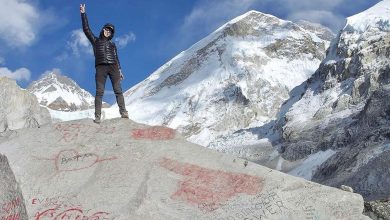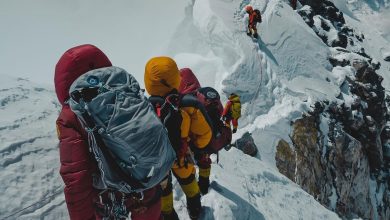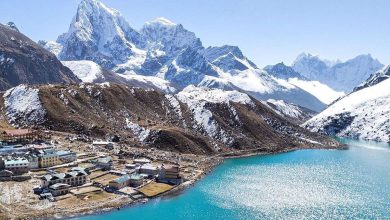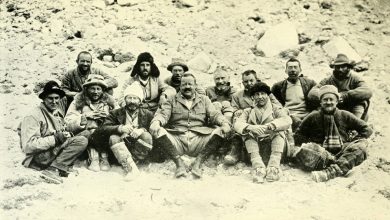Gokyo Ri Sagarmatha National Park
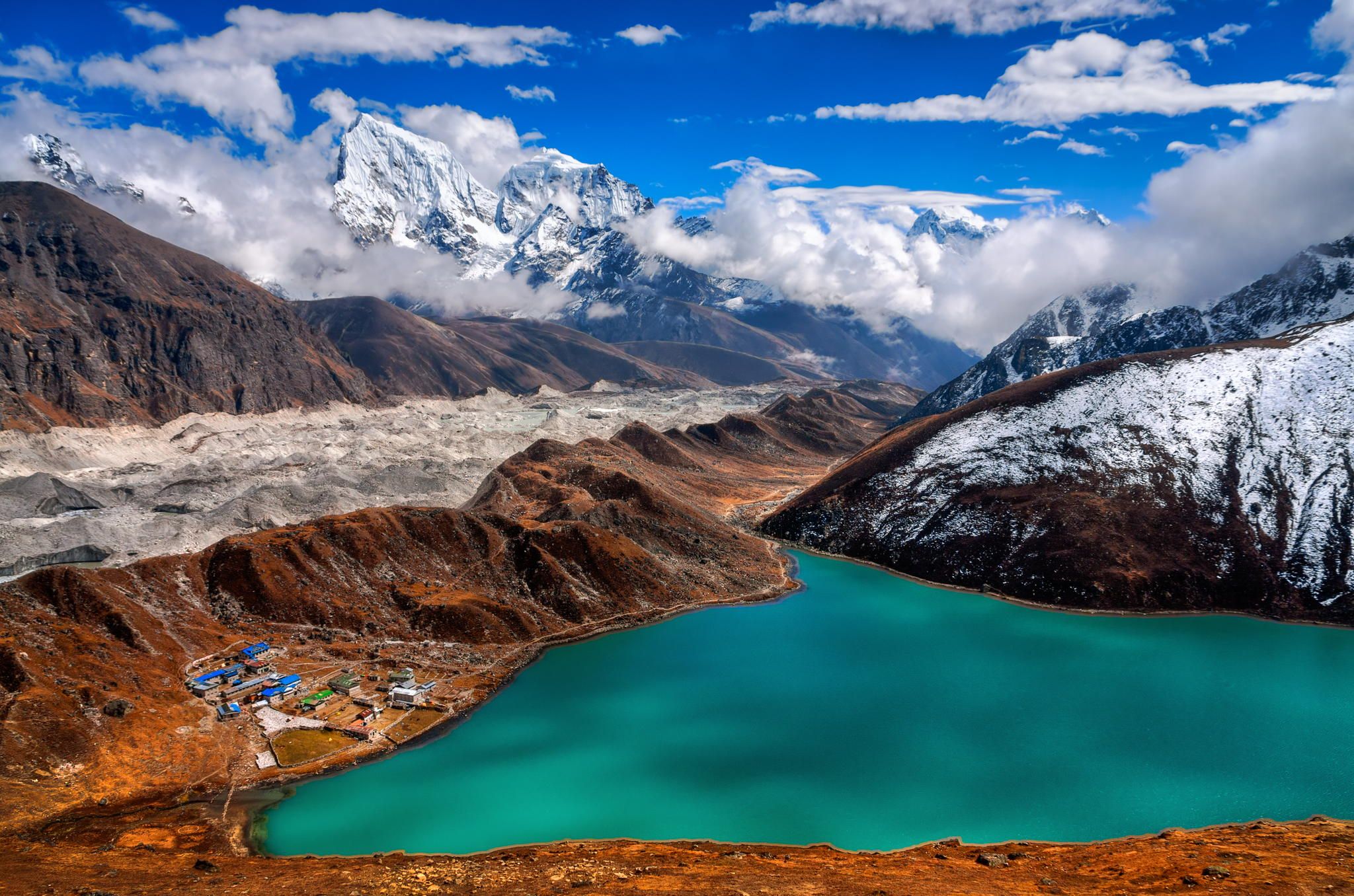

Nepal’s secret stock of trek destinations never ceases to amaze hikers who’re continuously in search of new spots. Its ancient trials, bursting with the fragrant alpine forest, stunning villages, and vibrant valleys, have had people’s hawkeye for a long time.
It has so many remarkable places that could possibly blow anyone’s heads off. But even out of those captivating places, it’s usually Gokyo Ri Sagarmatha National Park that draws wide attention from aliens.
The core site of Khumbu Valley, Gokyo Ri, is insanely gorgeous with sweeping hills, lush green forests, primordial settlements, and steep-sided valleys. It has inescapable highlands with picturesque glacial lakes and mountains that are always thrilling to watch.
As for the UNESCO World Heritage site, Sagarmatha National Park always shines with its uniqueness and charm. The sanctuary holds plenty of imposing spectacles with dramatic landscapes, vast meadows, and majestic rivers.
There’s nothing quite as impressive as watching the wildlife in their natural habitat. Visitors in spring will even get to hear the birds cheeping and full-bloom rhododendron throughout the forest.
Aside from Gokyo Ri, visitors also traverse Everest Base Camp and Three Passes while visiting Khumbu Valley. They are significantly popular and often busy during the trekking season, making Gokyo Ri Sagarmatha National Park more likable.
Highlights of Gokyo Ri Sagarmatha National Park
- Scenic view of sky-scraping mountains including Nuptse and Pumori
- Striking turquoise lakes, vibrant valleys, and cliffs
- Discover the rich culture and lifestyle of people in the Himalayas
- Exploring dramatic landscapes, beautiful landmarks, and waterfalls
- Witness exotic flora and fauna inside Sagarmatha National Park
- Homely atmosphere and warm hospitality by locals
Where is Gokyo Ri Sagarmatha National Park?
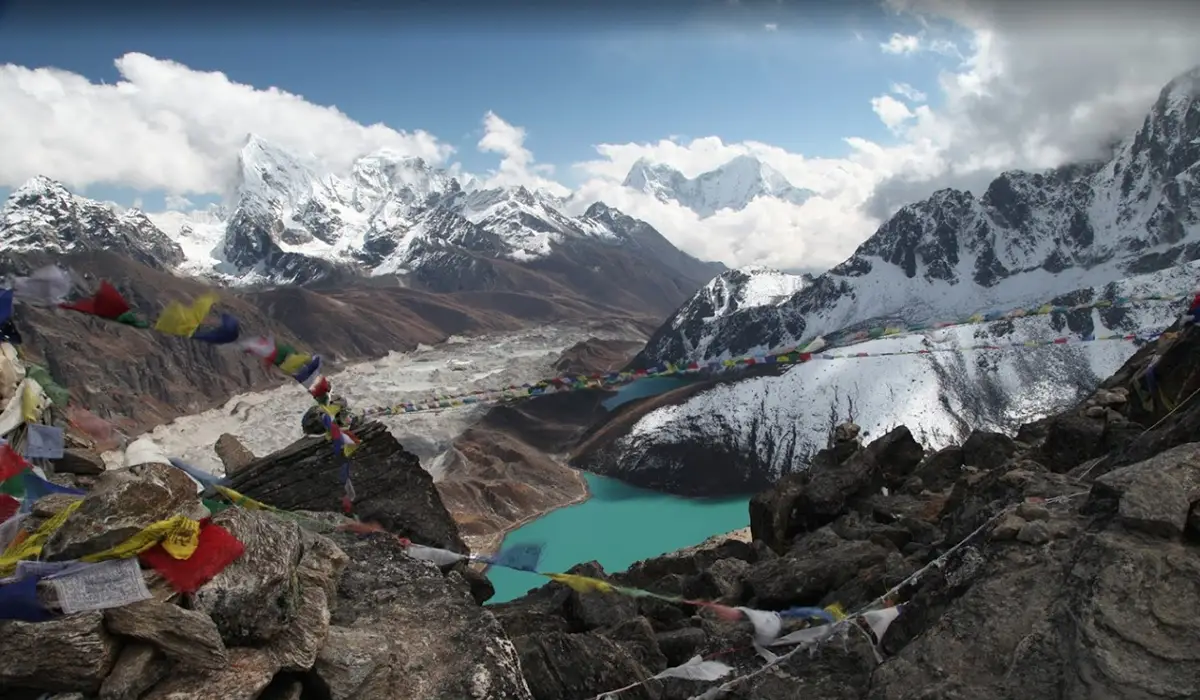
Gokyo Ri Sagarmatha National Park has become a go-to destination for travelers longing to sight Mt. Everest. It’s looked upon with great fondness by avid trekkers for its spectacular scenery, quiet villages, amicable locals, and viable trails.
Having said that, there are still many excursionists who haven’t visited the site till now due to insufficient knowledge and popularity besides Everest Base Camp. Most of them walk the base camp and don’t give their best shot to explore Gokyo Ri, which lies next to Everest.
Gokyo Ri nestles on the west of Ngozumpa Glacier in the Himalayas. The sparkling turquoise lake sitting right beneath the mountain is spotless and astounding. Thonak is the largest lake among all six, which feeds on the glacier dripping from the mountain.
Lying inside Sagarmatha National Park, Gokyo Ri needs a trekking permit to visit. Trekkers will have to take consent from the Tourism Board of Nepal to explore the site. Those who’re new to the place might even have to hire a tour guide who can steer the way up to Gokyo Ri.
When is the best time to visit Gokyo Ri Sagarmatha National Park?
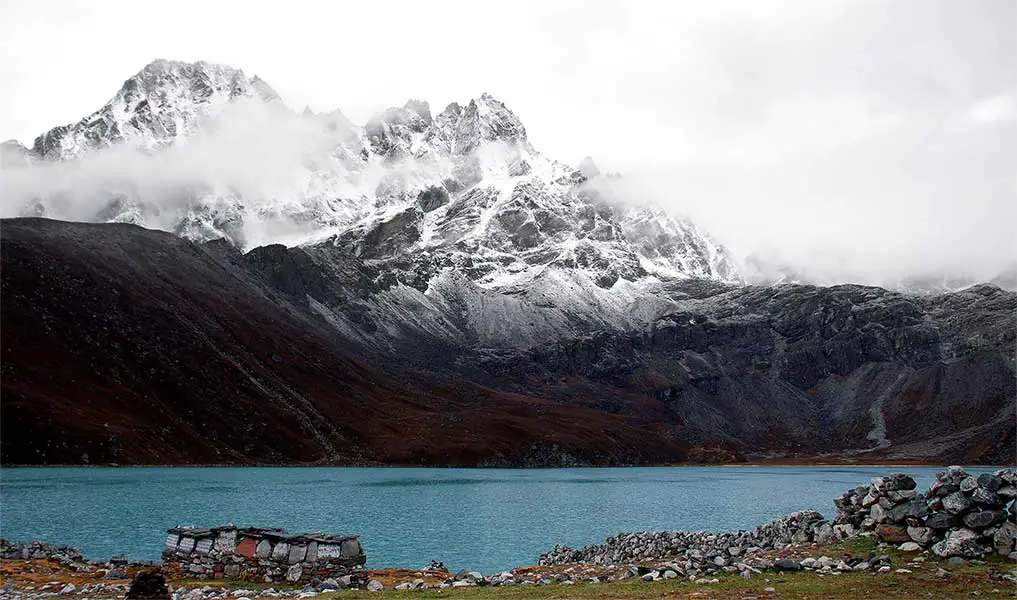
Spring and autumn clearly win the crown for the best time to visit Gokyo Ri Sagarmatha National Park. They have perfect weather and a delightful atmosphere that all visitors can enjoy.
Squeezed between winter and summer; Autumn is known to be a cooling-off month. It arrives with blazing hot early days, and by the end of the season, it’s frigid cold in Gokyo Ri. The average temperature is usually around 4-8 Degree Celsius in the mountains.
Days are bright and sunny during autumn, while nights are chilly cold. Visitors will get a lovely view throughout the way with fall foliage in the forest. The birds’ chirping can be heard from a distance along with the crystal clear view of snow-capped mountains.
Spring is another ideal time for Gokyo Ri Sagarmatha National Park as it too endures pleasant weather. The temperature ranges from 0-15 Degree Celsius in spring, making it cozy and nice for trekkers to walk the path. f
Visitors can see the blooming rhododendron throughout the forests and hills. It’s easy to snap wild animals and birds in spring as they frolic in the woods. Trekkers have an extra hour of daylight in the month which means there’s no need to hasten as you walk the trail per your pace.
Day beams with sunlight in spring, while the nights are slightly chilly with light wind. Therefore, it’s better to carry some warm clothes to withstand the cold. Winter and monsoon aren’t considered great for the trek to Gokyo Ri Sagarmatha National Park.
You might have to face heavy snowfall and wind storms during the season, making it hard to navigate. The trails are drenched in monsoon’s rain, causing it muddy and too slippery to stand, let alone walk. Considering how cold and foggy the weather is, there are high possibilities for flights to be canceled in winter.
How difficult is Gokyo Ri Sagarmatha National Park?
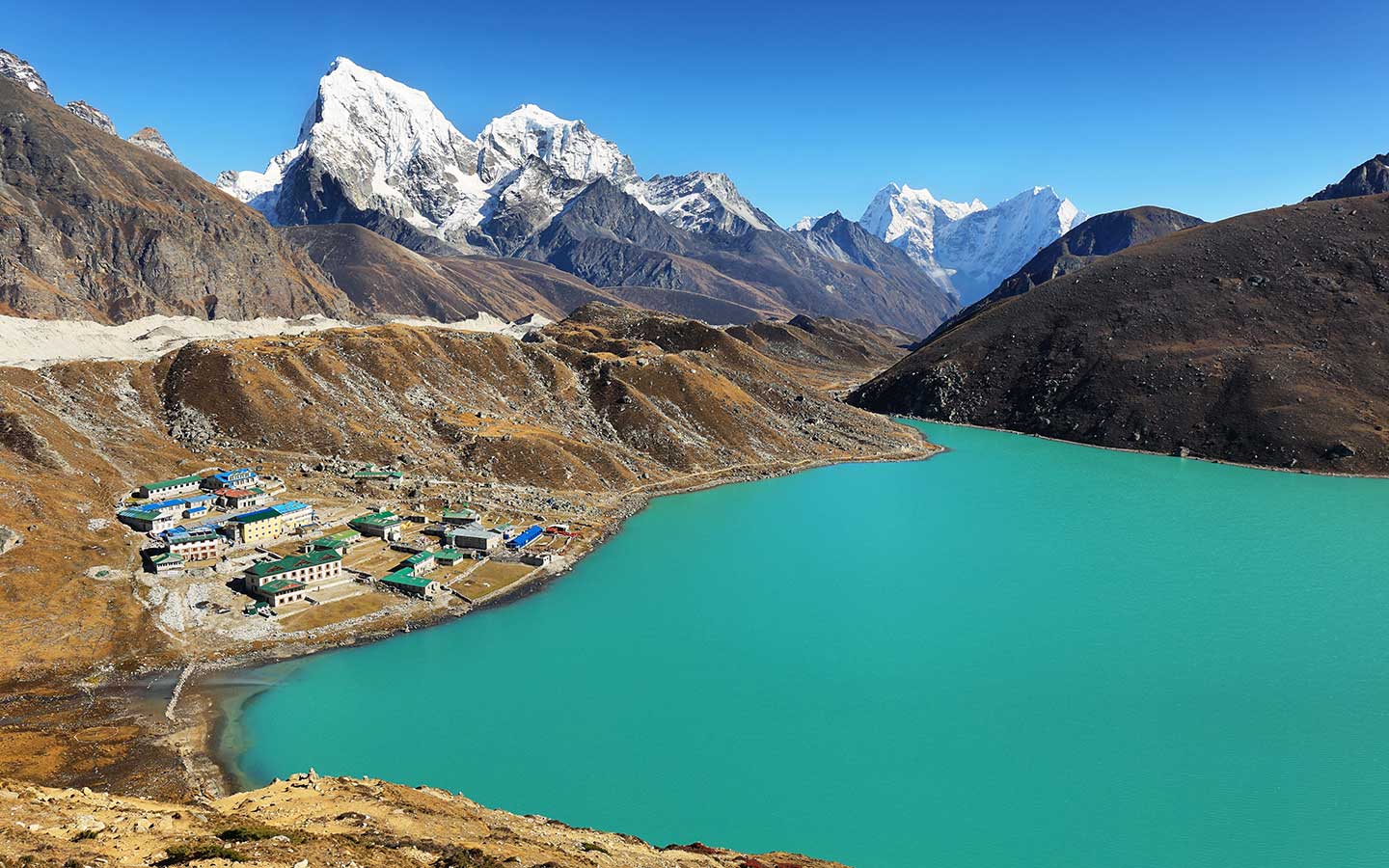
Affirmed as moderate trekking, Gokyo Ri Sagarmatha National Park often fools visitors for being too easy. It turns out the trek is quite challenging with a rugged trail that winds up and down until you get to the top.
They can be savage at times, putting several obstacles for hikers to get past. It’s hard to foretell the weather at higher elevations due to abrupt changes in air pressure. Hence, the unpredictable weather of Everest is another hindrance for hikers of Gokyo Ri.
1. Altitude Sickness
Altitude Sickness is something that Gokyo Ri trekkers often terrify due to the low concentration of oxygen in the atmosphere. Beginners who’re new to the trail or in a big rush will suffer more on the trek.
It usually starts with nausea and lightheadedness before things get bad. Most of the time, altitude sickness escalates due to casual attitude and improper care. Hikers who don’t give themself enough time for the rest will be having a hard time climbing up to 16,000 ft. high to Gokyo Lake.
Climbing too fast and too high is usually the cause of acute mountain sickness within hikers. Therefore, it’s better hikers must take a day off from the trail and adjust to the temperature to prevent the illness.
2. Steep Trail
The trek route of Gokyo Ri will never be easy to walk, especially with rocks and lofty hills. In most of the sections, the trails are precipitous and take hours to climb. Some are even craggy, running over the moraines with boulders and ice sheets.
The path weaving through hills and forests is naturally challenging to walk. They are strenuous and take a lot of physical strength to put up. It’s why the trekkers climbing Gokyo Ri must be in good shape during the trek.
They must be physically fit to beat the rugged trails and go all the way. Hikers must indulge themself in a series of fitness training and a strict diet to improve physical strength and endurance.
3. Weather
The severe weather of Khumbu is another solid reason to explicate why the Gokyo Ri Sagarmatha National Park trek is relatively more arduous than any other. Due to high elevation, the climate is severe in and around the lake.
In pre-winter and post, the trails are filled with snow, making it hard to get a grip. Snowstorms and fogs often obstruct the visibility during the month following, which trekkers might have to back off.
Meanwhile, in monsoon, the trails are drenched in rain and filthy to traverse. The weather isn’t cool during the season with continuous downpours and blizzards. Therefore, travelers are not recommended for the Gokyo Ri Sagarmatha National Park trek during monsoon and winter.
4. Finding the right navigator
Hiring a tour guide for Gokyo Ri Sagarmatha National Park may seem easy, but it’s actually hard, especially with the language barriers. Most locals employed as guides in the Himalayas might have a language problem.
So, it takes a lot of time and effort to find the right navigator who can freely interact with you. However, if you’re traveling through travel companies, then they’ll get you one. You won’t have to stress about whom to hire and how much to pay.
Other than that, you’ll also have to get a porter who can help you with your luggage. Keep in mind that the porter here carries no more than 25 kg weight each person. Therefore, if you’re thinking of bringing all items then better scrap it or be ready to pay an extra amount.
Similar articles you may like:
How to reach Gokyo Ri Sagarmatha National Park?
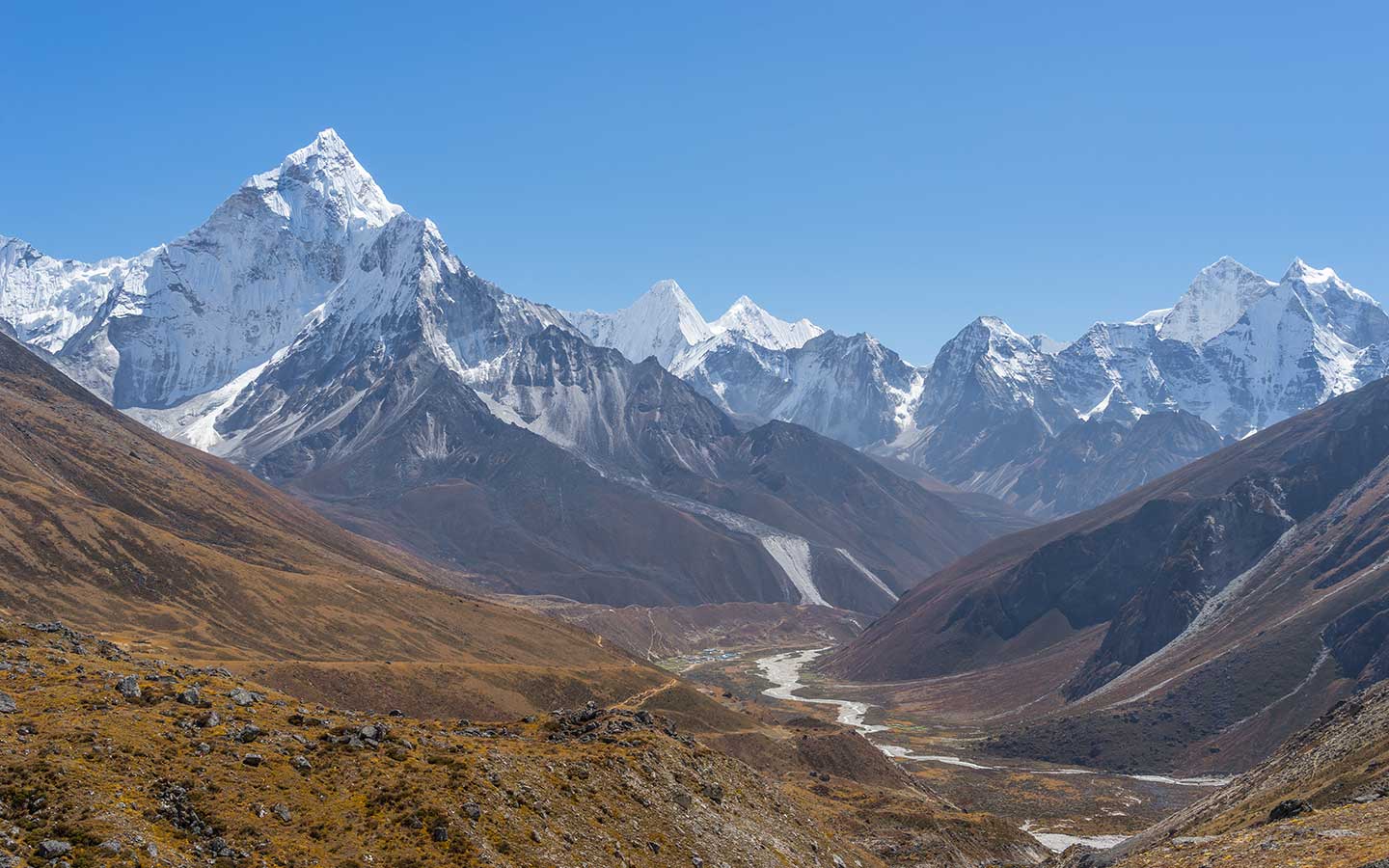
Trek to Gokyo Ri Sagarmatha National Park begins with a picturesque flight to Lukla from Kathmandu. The trip offers breathtaking scenery with rocky cliffs, idyllic hillsides, lush-green forest, and waterfalls.
After landing at the airstrip and having lunch, the trek makes its way to the hill beside the Dudh Koshi Riverbank. It comes across several villages, including Phakding, Namche, and Machhermo. Trekkers will spend most of their day climbing steep hills and valleys to reach Gokyo Ri.
After arriving at the village, the trail shortens but simultaneously gets more rigid with a sheer climb. Most of the segment is uneven and rocky for trekkers to ascend. It takes a lot of stamina and forbearance to walk the trail.
Upon arriving at 5,000 meters above sea level, we can catch a glimpse of beautiful Gokyo Ri and its nearby snow peaks. You can see the tranquil Gokyo Lake and the largest Thonak from the shore that’s well-fed by glaciers.
Outline Itinerary
Day 01: Flight to Lukla (2,860 meters) 40 mins, Trek to Phakding (2,610 meters), 2-3 hrs
Day 02: Trek to Namche Bazaar (3,440 meters), 6-7 hrs
Day 03: Rest day in Namche
Day 04: Trek to Dole (3,680 meters), 5-6 hrs
Day 05: Trek to Machhermo (4,470 meters), 4 hrs
Day 06: Trek to Gokyo Valley (4,800 meters), 5 hrs
Day 07: Hike to Gokyo Ri (5,357 meters), Trek Back to Gokyo Valley, 4-5 hrs
Day 08: Trek to Dole (4,200 meters), 6-7hrs
Day 09: Trek to Namche Bazaar (3,500 meters), 5-6 hrs
Day 10: Trek to Lukla
Day 11: Flight back to Kathmandu
Day 12: Departure
Gokyo RI Sagarmatha National Park via Jiri
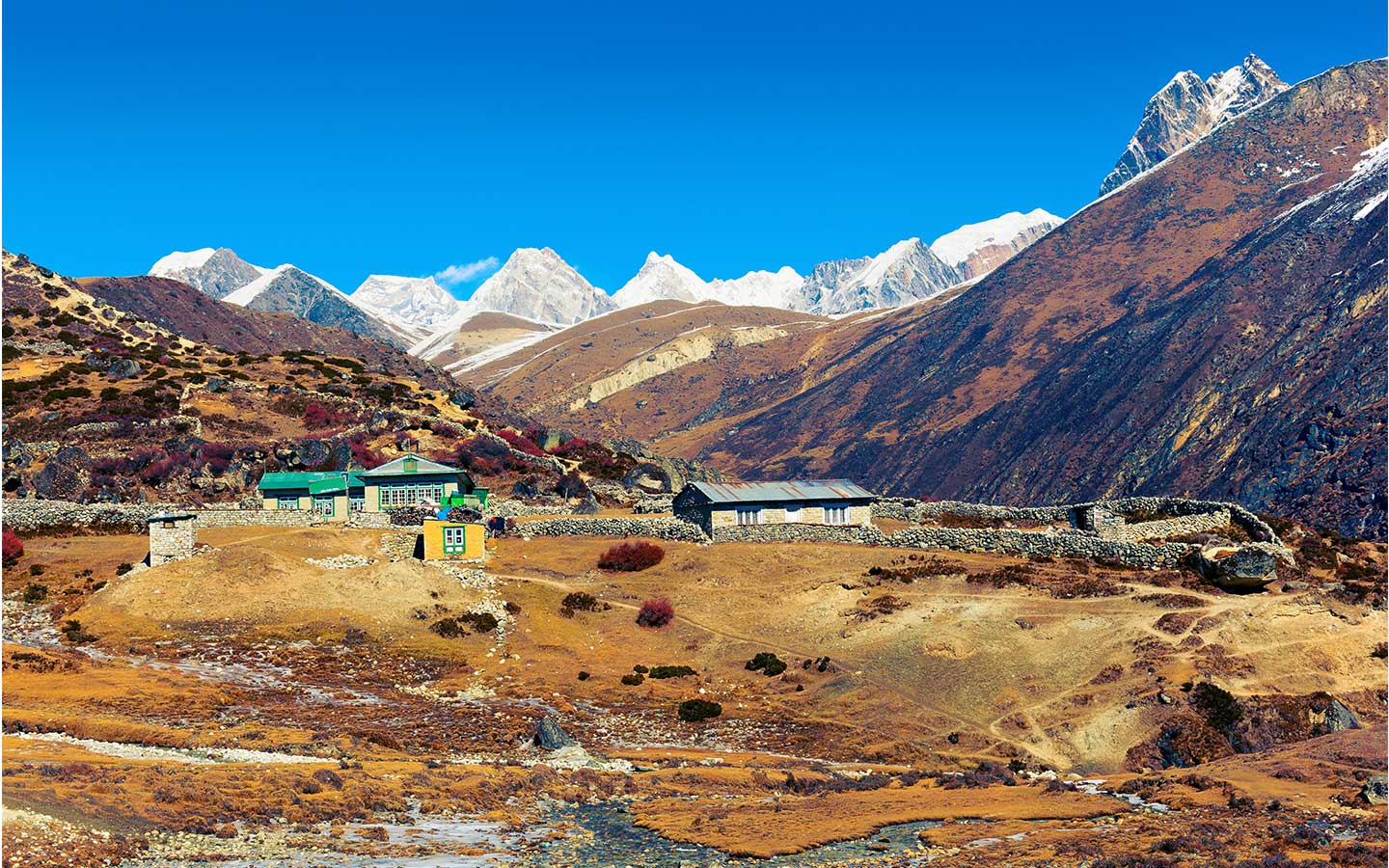
Trekkers who don’t want to take a flight to Lukla and enjoy the raw beauty of the Himalayas often opt to take a drive to Lukla via Jiri. The trip is longer than usual but pleasing with magnificent sceneries and diverse topography.
Trek to Gokyo Ri Sagarmatha National Park via Jiri lasts almost three weeks, penetrating through rural settlements. The journey commences with a long but scenic drive to Jiri that lasts nearly 8-9 hours.
From there, we begin our trek to Lukla with a long ride on a zigzagged trail. The entire walk takes almost a week, passing through magnificent villages like Sete, Junbesi, and Pujyan. With the trail stretching 31 miles from the beautiful town, we get to witness some incredible views under the sky.
After Lukla, we head to Namche, scrambling the trails and crossing a bunch of suspension bridges. As soon as the trail enters Sagarmatha National Park, we can see unique vegetation and wildlife in the region. At Namche, we’ll take a day off to adapt to the climate and avoid altitude sickness by walking up to Syangboche.
On the following day, we’ll traverse Phortse Tenga on a dusty path that rises all the way up to 12,000 ft. The trail is 3.5 miles long and runs through the edge of the hill and stone stairs to arrive at the village.
From Machhermo, the paths are hard to beat with steep hills and rocks. The trip to Gokyo Ri includes a stop at Gokyo Valley, from where we can watch the glistening lakes. After the sightseeing and exploration of the mountain, we’ll get our way down to the rural settlement.
On the next morning, we’ll gently descend to Phortse off the hills and valleys. The trek will take almost 7 hours downhill walk passing the small hamlets and rocky hills. From Phortse, we’ll take an easy stroll to Lukla and then fly back to Kathmandu.
Outline Itinerary
Day 01: Drive to Jiri (1,950 meters), 7-8 hrs
Day 02: Trek to Shivalaya (1,810 meters), 5-6 hrs
Day 03: Trek to Bhandar (2,150 meters), 5 hrs
Day 04: Trek to Sete (2,575 meters), 6 hrs
Day 05: Trek to Junbesi (2,675 meters), 6-7 hrs
Day 07: Trek to Nunthala (2,440 meters), 7 hrs
Day 06: Trek to Khari Khola (2,070 meters), 5-6 hrs
Day 08: Trek to Pujyan (2,720 meters), 6-7 hrs
Day 09: Trek to Phakding (2,640 meters), 6 hrs
Day 10: Trek to Namche Bazaar (3,440 meters), 4 hrs
Day 11: Acclimatization at Namche
Day 12: Trek to Phortse Tenga (3,680 meters), 5-6 hrs
Day 13: Trek to Machhermo (4,470 meters), 6 hrs
Day 14: Trek to Gokyo Valley (4,800 meters), 4-5 hrs
Day 15: Hike to Gokyo Ri, Return to Gokyo Valley (5,357 meters), 4 hrs
Day 16: Trek to Phortse (3,810 meters), 7 hrs
Day 17: Trek to Namche (3,440 meters), 6 hrs
Day 18: Trek to Lukla (2,860 meters), 7-8 hrs
Day 19: Flight to Kathmandu (1,400 meters), 40 mins
Trek Duration of Gokyo Ri Sagarmatha National Park
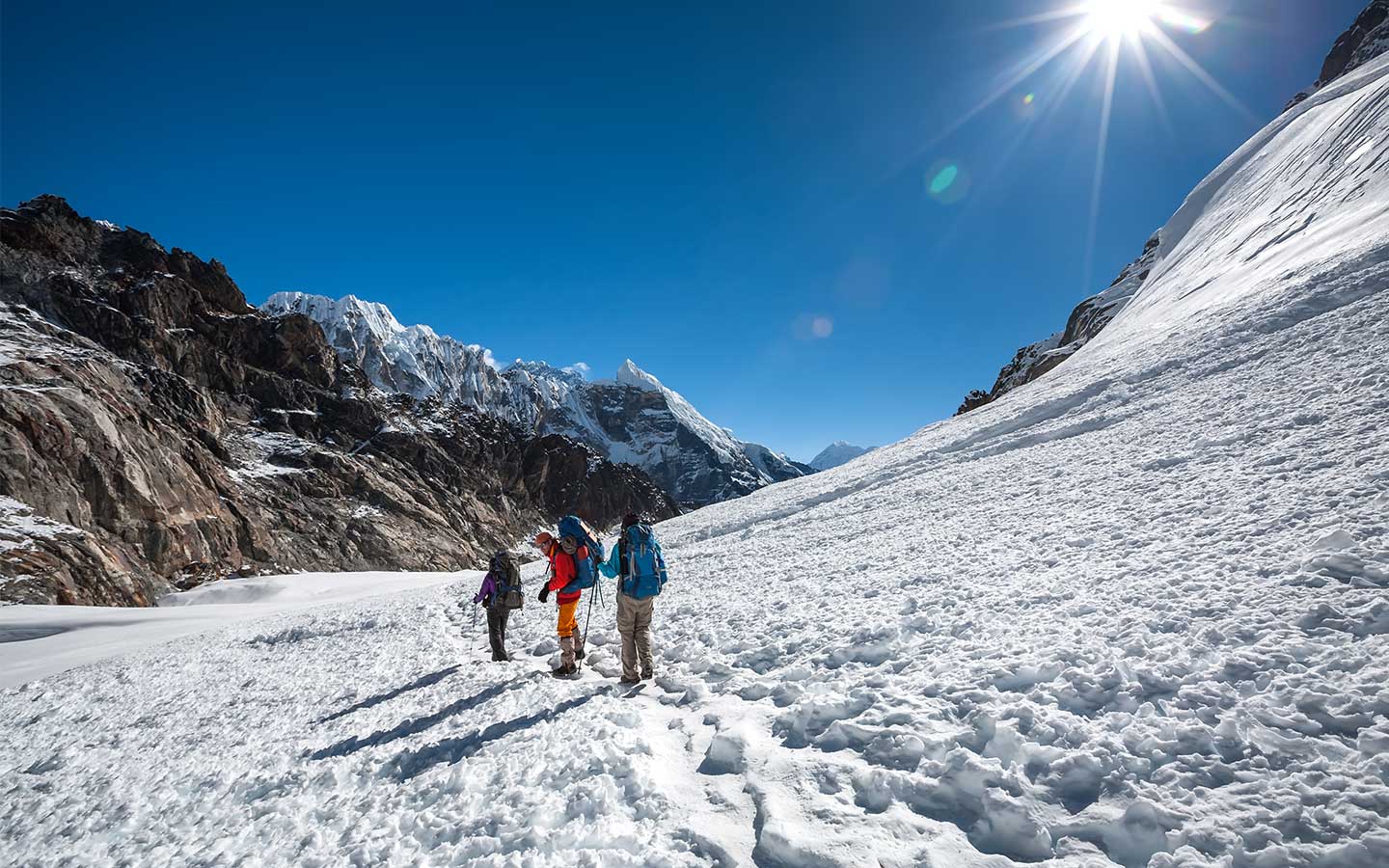
The trek duration of Gokyo Ri Sagarmatha National Park depends on the itinerary prepared by a travel agency. On several occasions, it varies due to the assertion of travelers, yearning to stay longer in the village.
The travel length of Gokyo Ri Sagarmatha National Park is usually two weeks. The trip sets off with half an hour flight to Lukla, offering a pristine view of snowy peaks and heavenly landscapes.
Walking the trail alone takes more than a week, following a series of rocky trails and steep cliffs. Trekkers will be hiking on an average of 5-6 hours each day while covering a distance of 6 miles.
Gokyo Ri Sagarmatha National Park is a moderate-level trek with barely any technical difficulties. Despite that, first-timers might have a hard time scrambling the trail due to uneven terrains and steep hills. Therefore, trekkers will have to be physically fit in order to beat the course, which offers a marvelous view of towering cliffs, green pastures, and villages.
Also, they’ll have to bring the needed essentials along with suitable clothing and equipment. A pair or two of stout climbing boots that are water-resistant, durable backpack and a trekking pole will be great for the Gokyo Ri Sagarmatha National Park trek.
Preparation for Gokyo Ri Sagarmatha National Park
The trek to Gokyo Ri Sagarmatha National Park might be suited to both beginners and pro climbers. But, it’s undeniable that the path can be intimidating without the right preparation and training.
Trekkers of Gokyo Ri have to be fit as a fiddle to beat the trails of Gokyo Ri. They should be both mentally and physically prepared for the expedition as it takes no time to lose focus. Along with that, climbers must have better endurance power to knock the jagged trail.
Since Gokyo Ri Sagarmatha National Park is labeled as moderate trekking, hikers don’t have to push too hard. Start with basic fitness exercises like jogging and cardio to strengthen your core and build muscle. To increase stamina and improve flexibility, climb the stairs or do push-ups and side planks.
Taking a long walk at least twice will further help hikers overcome the uneven terrain of Gokyo Ri. Staying in good spirits with a positive attitude throughout the expedition will help trekkers finish the hike on time.
Gokyo Ri Sagarmatha National Park Trekking routes
Roosted at Khumbu valley, Gokyo Ri is more than just a trek destination. It’s an unforgettable experience for any trekker, following splendid views, cultural exposure, and wildlife scenes. Adventurers can catch a glimpse of dazzling mountains, sheer glaciers, and cirque.
There is so much to check out here including a bunch of hiking trails that offer scenic spots. Gokyo Ri Sagarmatha National Park offers plenty of alternative routes to travel. Some of them are more crowded than the others with visitors all year around.
Gokyo Ri Trek with Everest Base Camp
Everest Base Camp is irrefutably the most popular trek spot in Nepal, with visitors continuously flocking to the region. It’s available for every adventure enthusiast who’s not in a rush and has extra days in hand.
Gokyo Ri Trek’s package tour with Everest Base Camp comes with a short ride to Kala Patthar. Visitors will be walking past three passes including Cho La Pass and Renjo La to end up at the base camp.
Trails are rugged in this section following which hikers might have to struggle a little bit. However, the suffering is worth it as visitors will get to witness the mesmeric snow peaks and glaciers.
Visitors will get to enjoy a glimpse of shimmering Mt. Everest alongside Cho Oyu and Nuptse. The fascinating landforms, rocky hills, and icefall are rewards for guests. Trekkers will also be climbing Kala Patthar at 5,643 meters to clap eyes on Everest massif, Pumori, and serene lakes.
Gokyo Lake Ri Trek
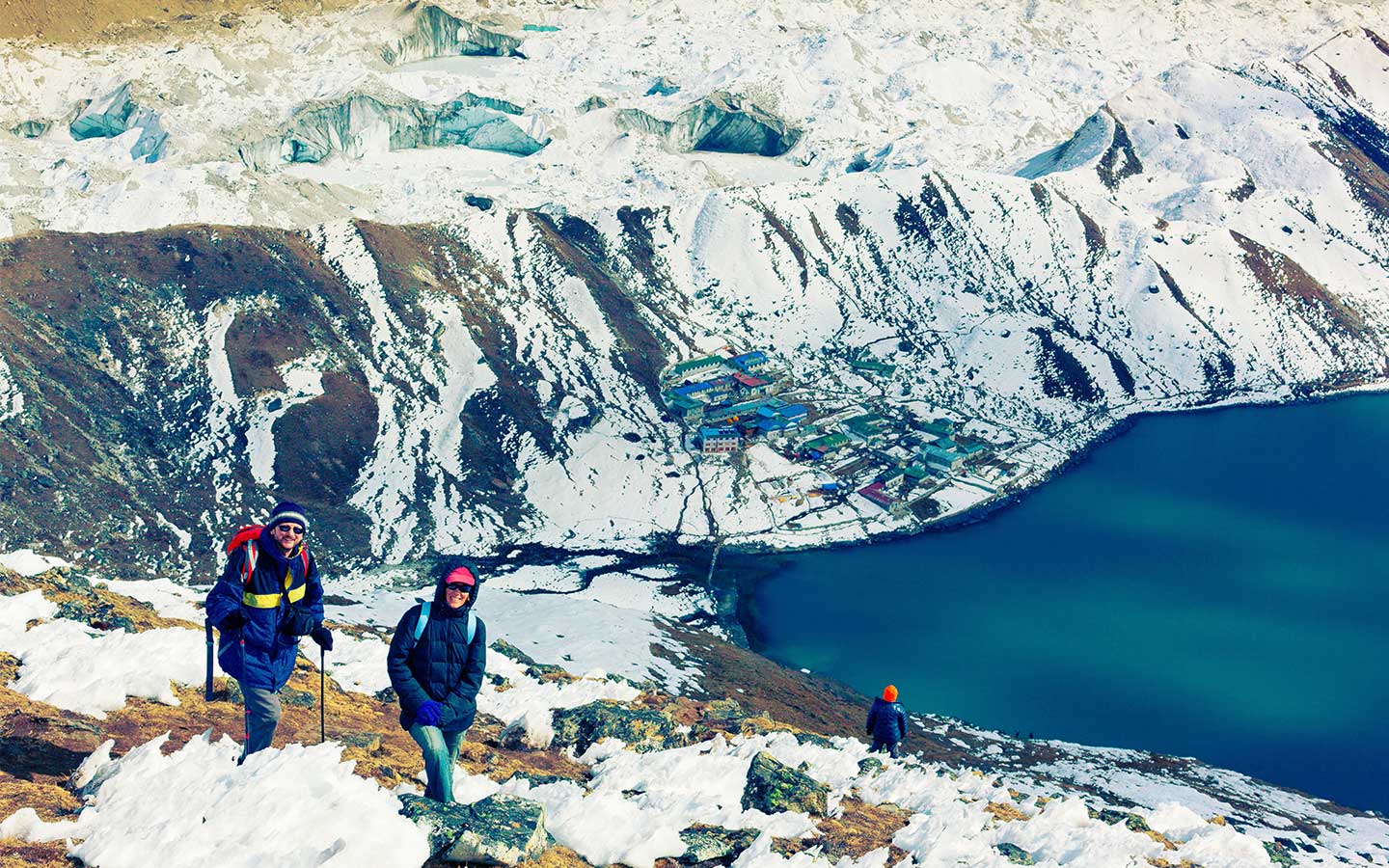
Another side trek that can be done along with Gokyo Ri is Gokyo Lake. It’s one of the most significant landmarks in the Khumbu region with travelers longing to watch oligotrophic lakes.
It comprises six freshwater lakes with the largest being The Gokyo Lake tripled kicks off with a flight to Lukla, followed by an endless walk to Gokyo Valley. The hike involves walking the rugged trails and climbing sharp hills for almost a week. Climbers will have to walk past the rural settlements including Dole to arrive at the site.
You may also like:
